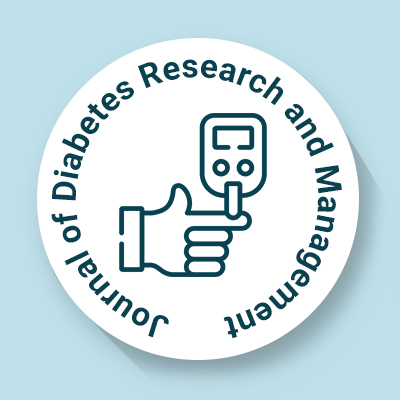
Journal of Diabetes Research and Management
OPEN ACCESS

OPEN ACCESS
Type 1 diabetes (T1D) is an autoimmune condition commonly known as Juvenile Diabetes. when the immune system of the body destroys pancreatic cells (beta cells) leading to the body lacking insulin. Type 1 diabetes causes excess blood sugar levels in the body. Some of the usual symptoms of the disease are urination more frequently, thirstiness, always being hungry, losing weight, blurry vision, tiredness, and delayed healing of wounds, etc. Type 1 diabetes is increasing in children and youth below the age of 15. It is mostly diagnosed in children, and it is increasing everywhere around the world.
Type 1 diabetes can usually be differentiated from type 2 on the basis of testing for the presence of autoantibodies and the absence of C-peptide. No definitive prevention method is currently available for type 1 diabetes. In every case of diabetes, type 1 accounts for approximately 5-10%. Around 80000 children get this disease annually.
Beta cells are the only cells that secrete insulin in the body. Destruction of these cells leads to Type 1 Diabetes. The body is unable to respond to a rise in blood sugar in the absence of insulin. As a result of this, diabetic patients experience continuous hyperglycemia.
Type 1 diabetes risk is increased in children whose mothers are obese and for children whose mothers are obese and in children delivered by caesarean. There has been a small association between type 1 diabetes risk and consumption of gluten or dietary fiber found in studies.
Type 1 diabetes can be caused by various factors, including genetics and certain viruses. While it often develops in children or teenagers, adults can also be diagnosed with it. Most people with type 1 diabetes need two types of insulin. Basal insulin is long-acting and helps control the amount of sugar your body produces when you're not eating. On the other hand, meal-time insulin, also known as bolus or prandial insulin, acts quickly and is taken just before meals, usually a few minutes prior to eating. It works for a short duration to help move the sugar from the meal into muscle and fat tissues for storage.
With type 1 diabetes, you may also be at risk for issues such as hearing loss, gum disease, bone disease, or yeast infections (in women). Properly managing your blood sugar levels can help prevent these complications.
Without sufficient insulin, glucose builds up in the bloodstream instead of being absorbed by the cells. This excess glucose is known as hyperglycemia. As a result, the body is unable to use glucose for energy, leading to the symptoms associated with type 1 diabetes. The exact cause of type 1 diabetes remains unclear, as it is classified as an autoimmune disease. This condition comes when the immune system wrongly attacks and damages healthy tissues in the body. In people with type 1 diabetes, a trigger or infection prompts the body to erroneously target the beta cells in the pancreas that are responsible for producing insulin. The likelihood of developing autoimmune diseases, including type 1 diabetes, can be inherited from one's parents.